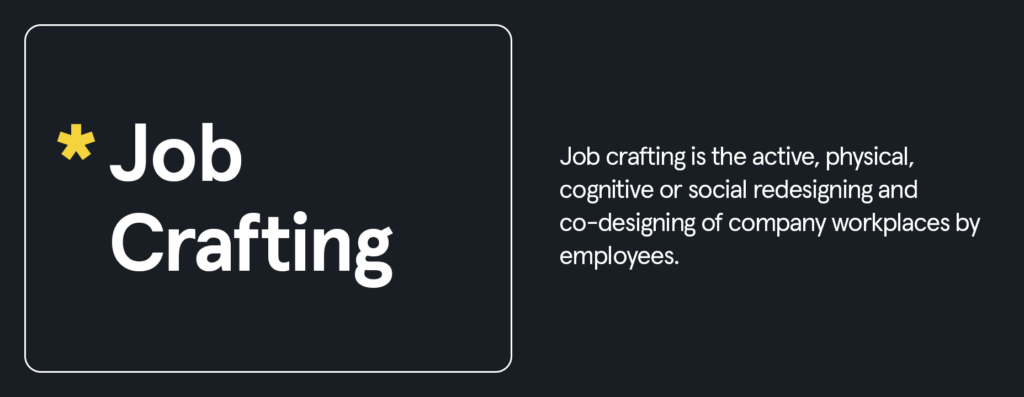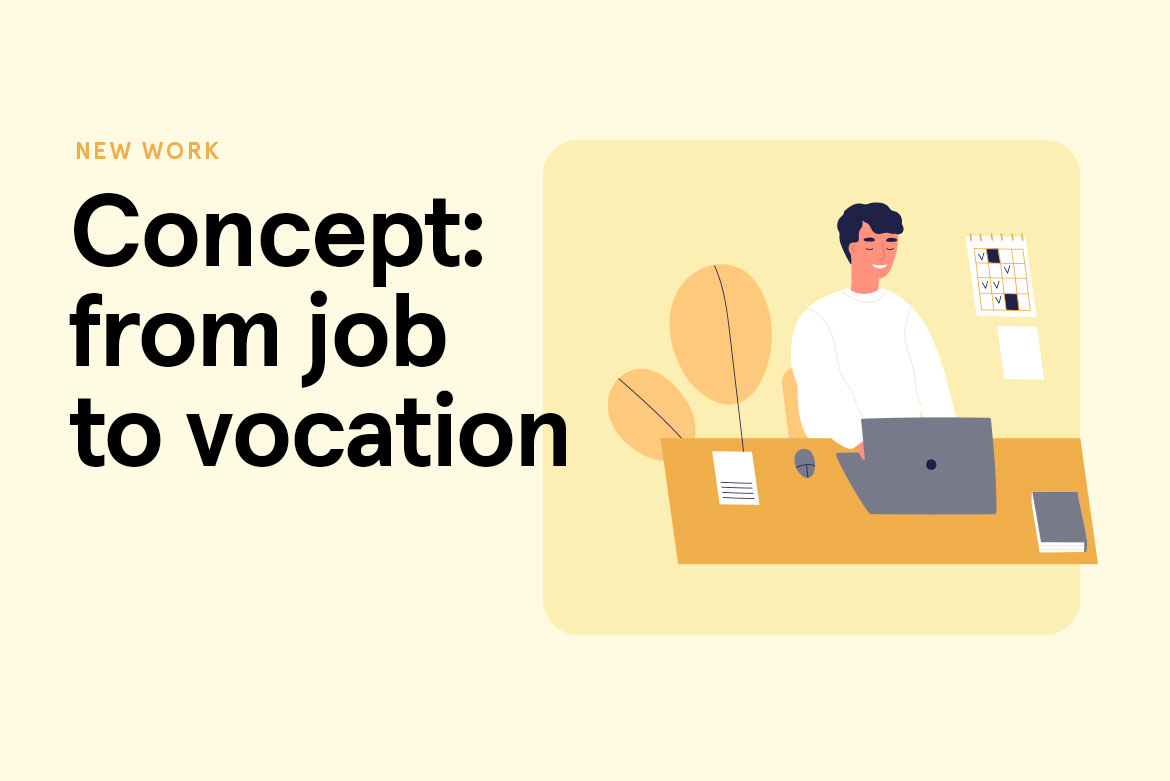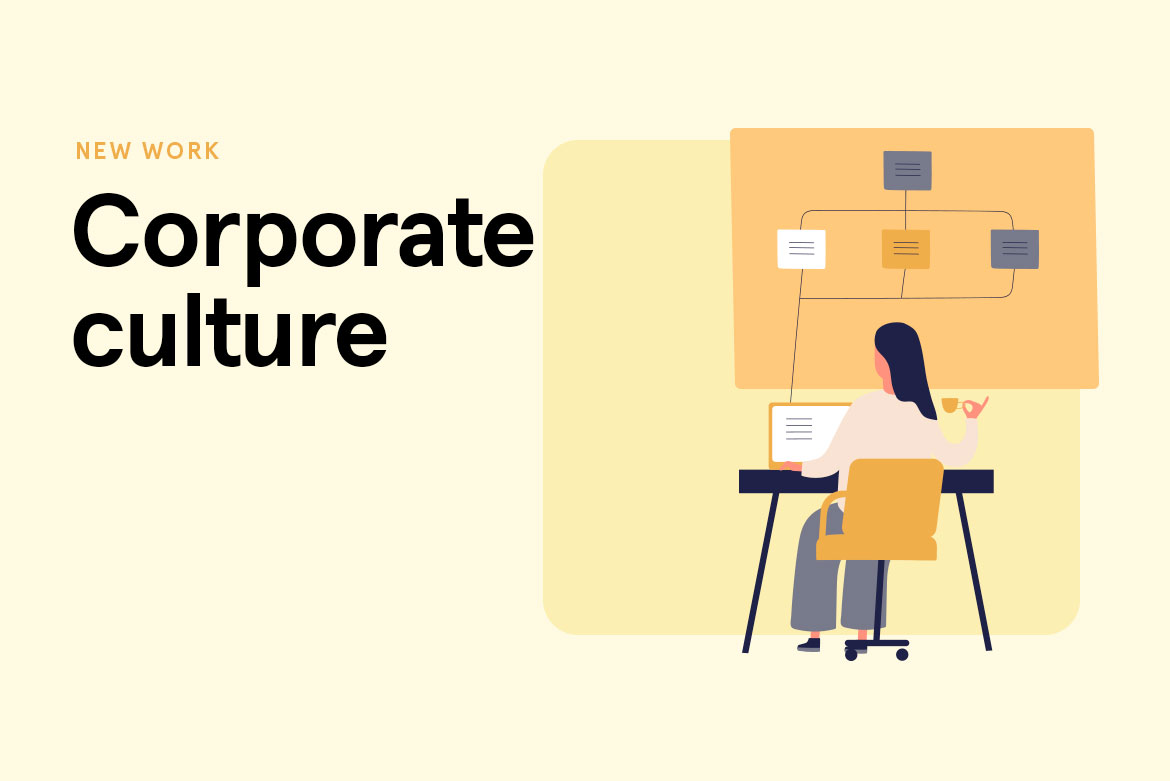New Work is now a prerequisite for many companies as they try to position themselves as top employers. Many job seekers describe their ideal employers with words like “empowerment”, “hybrid workplace models”, “flat hierarchies” and “agility”. These are all terms that fall under the umbrella of New Work.
Anyone who takes an in-depth look at the topic of New Work will quickly realize that it’s more than just a buzzword. Companies need to find the New Work methods that suit them best to attract and retain the talent that will drive their company forward.
To get you started, we’ve compiled the most popular New Work methods – along with their advantages and disadvantages – so you can check which ones fit best to your company, culture and goals.
Job crafting

Features
Job crafting can refer to different fields – accordingly, there are several ways to approach it.
- Tasks: In task-related job crafting, employees change and adapt their work tasks – new ones are added and adjustments are made in terms of time or effort, or the tasks are omitted completely.
- Relationships: This is about changes in the relationships of employees with one another – as well as with customers, stakeholders and superiors.
- Cognition: Cognitive job crafting occurs when employees alter the way they perform the tasks that make up their job, as well as how the relationships around it function.
- Environment: Job crafting may also impact the physical environment of the workplace when employees play a role in shaping their surroundings.
Advantages
Let’s be honest: it’s rare that a candidate and a job fit together perfectly. Often, slight adjustments are needed so that employees and their companies are satisfied over the long-term. All this is to say that job crafting takes place all the time, without being named as such.
However, those who enable employees to actively participate in shaping their work have a better chance of satisfying them over the long term. When employees are given agency, their needs can be better addressed and a sense of unity can be cultivated.
Disadvantages
While it’s true that job crafting should increase motivation, this shouldn’t be at the expense of efficiency. When never-ending optimization leads to distraction from the actual tasks at hand, things need to be adjusted.
New Leadership
New Leadership is an ultra-modern style of leadership. Instead of delegating tasks, New Leadership is based on personal responsibility and managers empowering their teams. The prerequisite for this leadership style is a high level of trust.
Features
New Work is raising employee expectations. This shift is also leading employees to ask more of their managers. Not only do they want to earn money, but they want their work to be meaningful and fulfilling. Employees want to be involved in important decisions – both about their own careers and concerning their working environment. They also expect a higher degree of freedom, not only in terms of actual work, but of work design – things like working remotely or from home and cultivating a healthy work-life balance. Want to learn more about New Leadership? Click here.
Advantages
Empathy, creativity and inspiration are just some of the qualities expected of New Leadership executives. If you want to attract new talent and be considered an attractive employer, New Leadership is an essential approach. But you as an employer also stand to reap huge benefits – when employees have a goal in mind and are involved in decisions about their working environment, it increases motivation, trust and a feeling of belonging.
Disadvantages
New Leadership is already the standard in many modern companies and has been taking the working world by storm for years. However, it’s worth noting that a rapid change in leadership style can initially cause uncertainty in traditional companies with an older workforce.
Holacracy
Holacratic organizations do not work with traditional organizational charts, hierarchies or titles. Instead, they rely on roles and responsibilities. There is a set of rules that everyone must follow, and decisions are made collectively or in individual teams.
Features
Instead of a pyramid-shaped company hierarchy, the organizational structure of a holacracy is represented as circles. There are employees within each circle who are responsible for exchange and transparent communication with the other circles. There’s also a strict distinction between operational meetings and “big-picture” structural meetings. Roles must be quite clearly defined in order to clarify responsibilities, due to the lack of titles. Finally, decisions are always made with the involvement of all company stakeholders.
Advantages
Proponents of holacracies tout the high level of transparency, rapid decision-making and agility, greater innovation, and employee decision-making.
Disadvantages
A holacracy is probably one of the most radical forms of New Work. The changes required to make it work are massive, and not everyone can imagine leadership without managers. What’s more, not every manager necessarily wants to give up the leadership position – nor does every employee want to take on more responsibility. Finally, with dispersed leadership roles, the company salary structure also needs to be rethought.
Agile methods
Agility refers to the adaptability and flexibility of organizations in processes and projects. This enables them to respond better to new requirements and unforeseen events.
Features
Agility isn’t a concrete concept, but rather encompasses a variety of different methods, like Scrum or Kanban. Nevertheless, all methods follow these basic principles:
- Speed: Agility is intended to increase speed as teams are able to react more quickly to new requirements or unexpected changes.
- Adaptability: People should be able to adapt rapidly to external circumstances, and decisions should be made and implemented quickly.
- Customer centricity: Individual products are broken down into sub-projects, interactions and cycles. This makes the product more comprehensible to the customer on an ongoing basis.
- Mindset: The leadership style and team communication are characterized by appreciation, transparency and personal responsibility.
Advantages
The agile principles also sum up their benefits: speed, adaptability, customer-centricity and collaboration characterized by appreciation, personal responsibility, transparent processes and good communication.
Disadvantages
Agility requires a high level of communication and thus a greater time investment. What is perfect for a complex software project – and can even shorten it over the long-term – might be too much for shorter, simpler projects. The classic “waterfall” methods may be more effective for these tasks. If you want to learn more about agile methods and New Work, click here.
Conclusion: when it comes to New Work, there’s not one-size-fits-all solution
Many New Work methods can be combined to find the right fit for your company. For example, agile methods such as Scrum and Kanban often go hand in hand with New Leadership. Job crafting also works especially well in combination with other New Work methods. What’s important is that regardless of the New Work methods you choose, they should be individually adapted to fit your company and the work environment.







